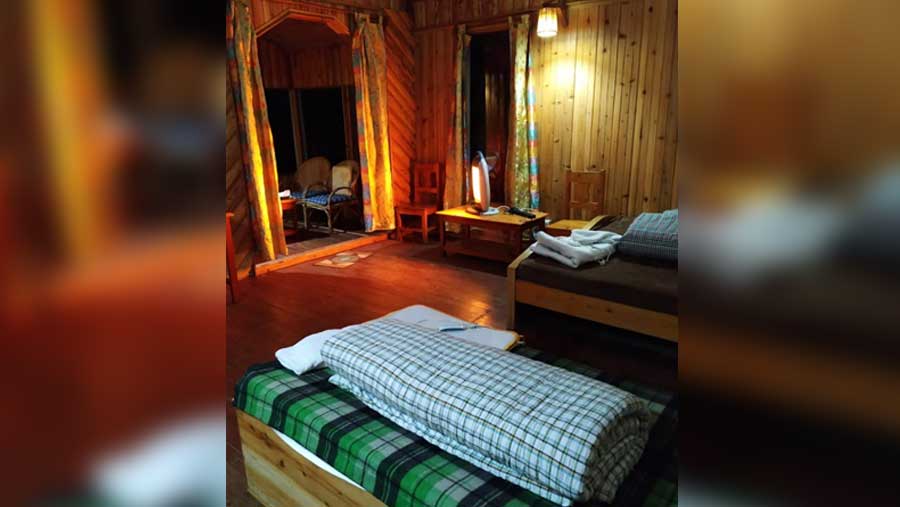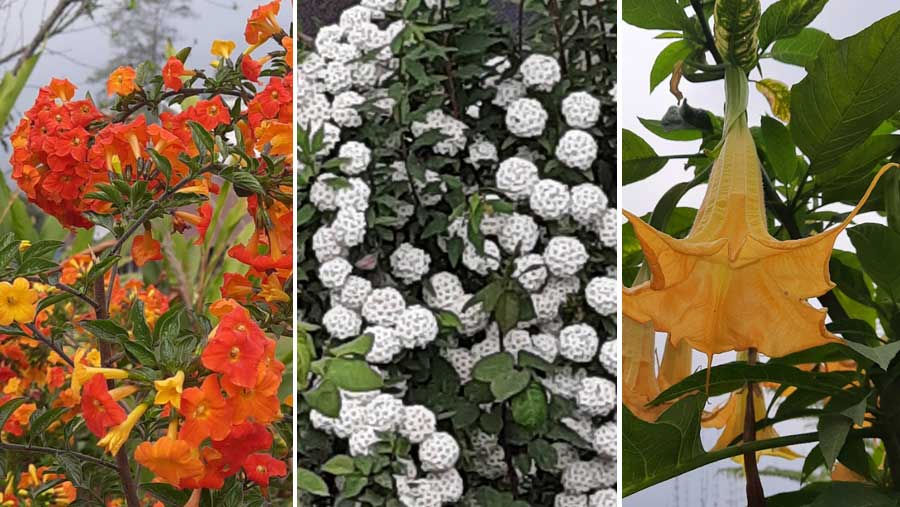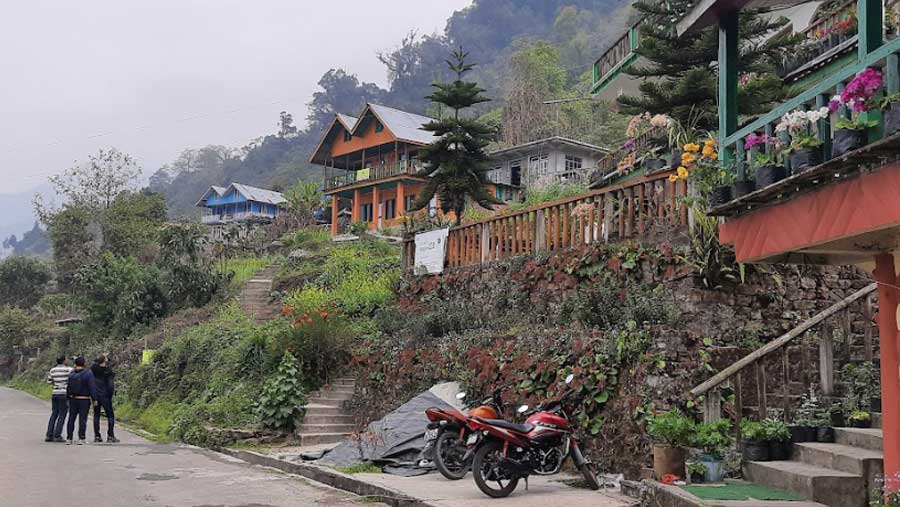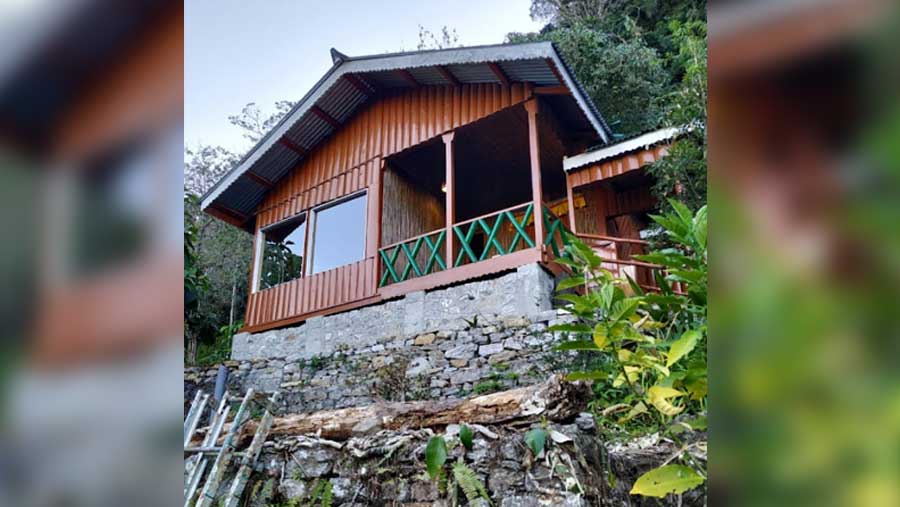During the short breather between the two phases of Covid surges early this year, we were fortunate (and brave) enough to squeeze in a short trip to the Himalayan foothills of North Bengal and soak in the refreshing coolness and verdure of our favourite destination. For a group consisting of lazy nature lovers, avid bird watchers and passionate photographers, the unanimous choice was the Neora Valley Jungle Camp, an ecotourism venture by Help Tourism in Kolakham, a sleepy little hamlet tucked away in the green folds of the eastern Himalayas.
The Jungle Camp

The interiors of a room at the camp Tarun Ghosh
The Jungle Camp is actually a cluster of six spacious cottages and log huts on a terraced hillock (1,868 metres) on the fringes of the Neora Valley National Park, the 88 sq. km. national park in Kalimpong district, famous for the elusive red panda, the Himalayan black bear, clouded leopards and flying squirrels. It is home to an amazing array of birds as well (over a hundred), and rare flora and fauna — including an astounding variety of rhododendrons and orchids. The cottages are strategically located so as to offer a breath-taking view of the entire Kanchenjunga range on clear days, which are not rare during the ‘season’, i.e., between November and April.

The property offers magnificent views of the sun-kissed Kanchenjunga peaks Tarun Ghosh
We reached the camp amidst a drizzle after a four-hour ride from Bagdogra, with the peaks hidden behind clouds. The drizzle strengthened into a nightlong downpour, bringing down the temperature by quite a few notches. But the next morning, offering a magnificent view of the sun-kissed Kanchenjunga peaks, was a photographer’s delight. The bird watchers were pleased too, being greeted by a towering and soaring raptor overhead, iridescent sunbirds pecking at the flowers, a couple of orange-grey redstarts, woodpeckers, parakeets and wild hens in the thick bamboo grove just above the cottages. And the sumptuous spread on the dining table, mostly locally sourced, pleased all!
Welcoming smiles and twinkling eyes

Red, yellow, white, pink, purple, magenta, speckled: There are flowers everywhere Tarun Ghosh
The tiny village of Kolakham, just below the hillock, is no less attractive. There are flowers everywhere – rooftops, balconies, tea-shops, roadsides. Red, yellow, white, pink, purple, magenta, speckled. Orchids, azaleas, rhododendrons, lilies. An entry point to the Neora Valley National Park, it is quite a favourite spot for birdwatchers and trekkers alike, both from India and abroad. On arrival, one is greeted by the welcoming smiles and twinkling eyes of the villagers, who have opened their doors to travellers, offering cosy ‘homestays’ complete with a taste of the local cuisine. Every other home in the village has a room or two ready for tired souls looking for silence, serenity and scenery.

Every other home in Kolakham village has a room or two ready for tired souls Tarun Ghosh
While in Kolakham, one can explore the short walking trails in the virgin sal and bamboo forests of the Neora Valley crisscrossed by tiny streams, or trek to Changey Falls, some five kms away. It’s a slightly steep trek for the purely city-bred, particularly the last kilometre, which takes one to the base of the roaring falls. But the spectacular view of the snow-capped peaks through the spray mist is worth the toil.
Nearby places
Kolakham is just 10 kms from Lava, a popular tourist spot in Kalimpong. One can also plan a half-day trip to Lava, visit the beautiful Kagyu Thekchen Ling Monastery and savour the delicious momos and steaming cups of coffee in one of the numerous joints dotting the little town. While for the purely indolent, a couple of days of doing nothing is sure to soothe frayed nerves and tense muscles.
How to reach
- The nearest airport is Bagdogra, 125 kms/4 hrs.
- The route to Kolakham is Fulbari – Odlabari – Malbazar – Lava – Kolakham
- Booking details: https://www.helptourism.net/neora-valley-jungle-camp.php
Chaiti Mitra is Associate Professor in the Department of English, Ramakrishna Sarada Mission Vivekananda Vidyabhavan, Kolkata, and Guest Faculty at the Post Graduate Department of English, West Bengal State University. She has published several articles on narratives of trauma and resistance, and has recently published her first book, 'Boudoir to Bibighar: The Memsahibs and the 1857 Mutiny Narratives'. She is a regular contributor to Bengali newspapers and journals on gender issues. In her spare time, she is an amateur translator, avid traveler and theatre enthusiast.
